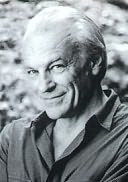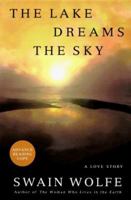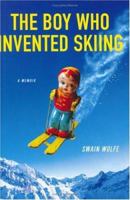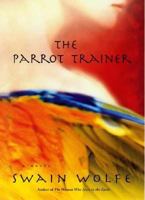Swain Wolfe

Swain Wolfe
Fellow author Rick DeMarinis sums up the appeal of one of today's most compelling -- and enigmantic -- fiction writers: ""Swain Wolfe is a magician -- his hypnotic prose makes the familiar strange, the strange familiar.""Biography
Swain Wolfe is a writer and filmmaker who has lived in Montana most of his life. His early films were made in Oakland, San Francisco, Seattle, Albuquerque, Santa Fe, and Montana. An interest in cultural anthropology resulted in the films Energy & Morality, about the effect of high energy use on social behavior, and Phantom Cowboy, about the ways groups and individuals heighten their sense of identity by using aggression to isolate themselves and their causes from the general public. His films have been exhibited at the Museum of Modern Art in New York and have twice represented the United States in the International Public Television Conference.Recent projects have taken him to a Bedouin shantytown on the Gulf of Aqaba and to an island in Alaska to observe and film grizzly bears. The latter film, The Sacred Bear, will explore bear stories from early Eurasian and North American cultures, and compare our present views of nature with those of our early ancestors. One day in a meadow by the sea, he woke from a nap to find himself surrounded by five large grizzlies. He explained, ""The bears were eating Chocolate Lilies. They ignored me. But sometimes, when I'm just waking up, I can still feel bears around me: large, serene, self-possessed bears.""
For years, Wolfe lived and worked around natural storytellers. The first were the cowboys he lived with as a boy on ranches in Colorado and Montana. As a young man he worked in the underground copper mines of Butte and Walkerville, and later as a logger in the Bitterroot Mountains. In an interview for The Bloomsbury Review, he explained how these jobs affected the way he sees the world:
""When you're underground for a while, you begin to get the feel of where the ore flows, how hard the granite is one place from another, how hot the wall temperature is from level to level, where the earth slips and messes up the tracks, and things you knew but never had words for. Then one day after work you drive over to Anaconda to see your girl and you realize something is very different. Your world is never going to be the same because you cannot be on the surface without thinking about what's underneath. And like water seeping through sand, that sensation invades everything, all your thoughts, your dreams. You're never the same. The mines let you see in unconventional ways. At the same time, many of the miners knew how to tell stories better and with greater purpose than any I've read.
""After the mines, I worked in the woods. I became intensely aware of trees, which created another world for me and a very different way of seeing. Our early ancestors believed the world was alive and aware of us. I know how that feels and it affects how I write and how I tell stories."" His novel The Woman Who Lives in the Earth, evolved over a period of years. ""The end of the story came from a dream I had as a child. The personalities of the people, even various animals, and, of course, all those experiences that show up in small, unconscious ways -- all these things became a vague sensation that surrounded my dream. Then one day it was a story. It was like seeing a face for the first time in the ancient plaster of your kitchen wall. We can look at something for years, and suddenly see it.""
Author biography courtesy of HarperCollins.








